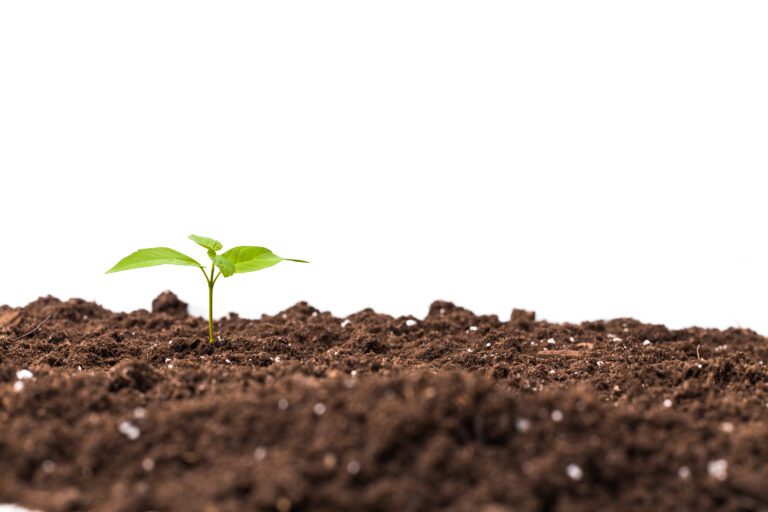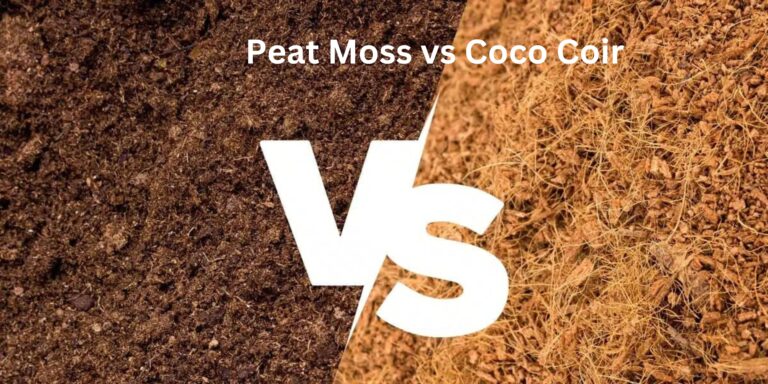Guava Tree: Best Growing Nutritious Tropical Fruit
Table of Contents
The Origin and History of Guava Trees
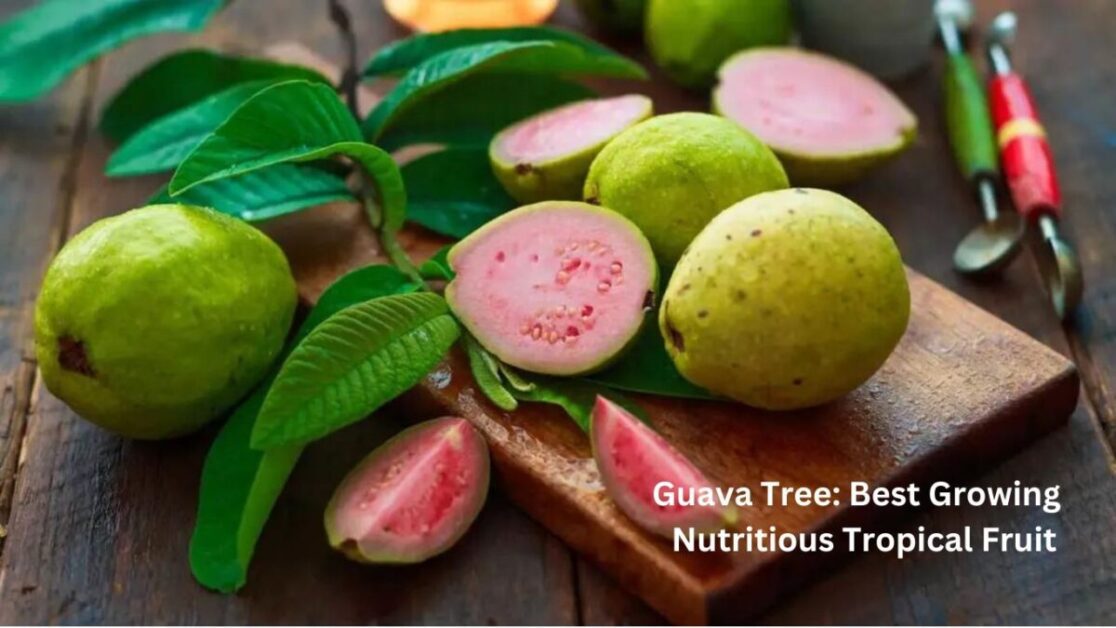
Guava trees, known scientifically as Psidium guajava, have a rich and fascinating origin and history. These tropical evergreen trees are believed to have originated in Central America, specifically in the region of Mexico extending towards northern South America. The exact timeline of their domestication is uncertain, but it is widely agreed upon that guava trees have been cultivated for thousands of years.
The ancient Mayans and Aztecs valued guava fruit not only for its delicious taste but also for its medicinal properties. Historical evidence suggests that guava trees were highly regarded by these Mesoamerican civilizations, and their fruit was considered a symbol of fertility and abundance. Additionally, guava leaves were used for their beneficial effects on diarrhea, dysentery, and respiratory issues.
Over time, guava trees spread across the globe through the efforts of explorers and colonizers. Portuguese sailors are said to have introduced guava trees to India during the 16th century, which eventually led to its widespread cultivation in various parts of the country. From there, guava trees made their way to other tropical and subtropical regions, such as Southeast Asia, Africa, the Caribbean, and the Pacific islands.
Today, guava trees can be found thriving in diverse climates around the world, from humid rainforests to dry arid regions. Their adaptability and resilience have made them a popular choice for both commercial orchards and home gardens. With their intriguing history and global presence, guava trees continue to captivate the hearts and taste buds of people worldwide.
Understanding the Nutritional Value of Guava Fruit
When it comes to the nutritional value of guava fruit, this tropical delight truly stands out. Packed with essential vitamins, minerals, and antioxidants, guava offers numerous health benefits that make it a valuable addition to any diet.
One of the key nutritional highlights of guava is its high vitamin C content. In fact, this humble fruit contains more vitamin C than oranges, making it an excellent source for boosting your immune system and fighting off infections. Additionally, guava is rich in dietary fiber, which aids digestion and promotes a healthy gut. Fiber also helps regulate blood sugar levels and can contribute to weight management.
But that’s not all – guava also contains significant amounts of other important nutrients, such as potassium, vitamin A, vitamin E, and folate. These nutrients play crucial roles in supporting heart health, maintaining healthy vision, promoting healthy skin, and supporting overall well-being. With its impressive nutritional profile, it’s clear why guava is considered a powerhouse fruit that can contribute to a balanced and healthy diet.
Sources:
– National Institute of Nutrition, India. (2012). Nutritive value of Indian foods.
– Linus Pauling Institute. (2009). Vitamin C.
– Ali, F., Aamir, M. N., & Sultana, V. (2017). Determination of major, minor and trace elements in four commercial fruits of Pakistan. Journal of Radiation Research and Applied Sciences, 10(1), 24-31.
Choosing the Right Variety of Guava Tree for Your Climate
When choosing the right variety of guava tree for your climate, it is important to consider the temperature and humidity conditions of your region. Guava trees thrive in warm, tropical climates with temperatures between 60 and 85 degrees Fahrenheit (15 to 30 degrees Celsius). They require a minimum of 6 hours of direct sunlight daily and prefer a humidity level of 70 to 80 percent.
One popular variety that is well-suited for warmer climates is the ‘Tropic Pink’ guava tree, known for its deliciously sweet and juicy fruit. This variety is tolerant of high temperatures and can withstand periods of drought, making it an excellent choice for regions with hot summers. Another option worth considering is the ‘Ruby Supreme’ guava tree, which is known for its high productivity and resistance to various diseases.
In cooler climates where temperatures can drop below freezing, it is essential to select a variety that is more cold-tolerant. The ‘Mexican Cream’ guava tree is an excellent choice for such regions. It can withstand temperatures as low as 25 degrees Fahrenheit (-4 degrees Celsius), making it a suitable option for those living in subtropical or Mediterranean climates.
Before making a final decision, it is always advisable to consult local gardening experts or nurseries to determine which guava tree variety is best suited for your specific climate. By selecting the right variety, you can ensure the health and productivity of your guava tree, and enjoy an abundance of delicious fruit for years to come.
Selecting the Ideal Location for Planting Your Guava Tree
Selecting the ideal location for planting your guava tree is crucial for ensuring its healthy growth and optimal fruit production. Guava trees thrive in warm climates, requiring full sun exposure for at least six hours a day. Therefore, it is imperative to choose a spot in your garden that receives ample sunlight.
In addition to sunlight, guava trees prefer well-drained soil that is rich in organic matter. Before planting, it is essential to assess your soil’s texture, pH level, and fertility. A slightly acidic to neutral pH range of 5.5 to 7.5 is ideal for guava trees. If your soil is heavy and prone to waterlogging, it is advisable to amend it with compost or well-rotted manure to improve drainage.
Furthermore, consider the surrounding environment when selecting the location. Guava trees should be protected from strong winds, which can damage the delicate foliage and hinder fruit development. If your garden experiences strong winds, consider planting a windbreak or locating the tree near a natural windbreak such as a fence, wall, or existing vegetation.
By carefully considering these factors – sunlight, soil quality, and wind protection – you can select the ideal location for your guava tree, providing it with the best conditions for healthy growth and bountiful fruit production.
Preparing the Soil for Successful Guava Tree Growth
Preparing the soil is a crucial step in ensuring successful growth of guava trees. The right soil conditions provide the necessary nutrients and support for the development of strong and healthy roots, which ultimately contribute to the overall growth and productivity of the tree.
Firstly, it is essential to choose a site that offers well-draining soil. Guava trees thrive in soil that is rich in organic matter, slightly acidic, and well-aerated. Conduct a soil test to determine the pH level and nutrient content of the soil, as this will help you make appropriate amendments.
Once you have assessed the soil condition, you can proceed with preparing the soil. Begin by removing any weeds, rocks, or debris from the area where you plan to plant the guava tree. It is crucial to create a clean and clear space for the tree’s roots to establish themselves effectively.
Next, incorporate organic matter such as compost or well-rotted manure into the soil. This will improve soil structure, enhance fertility, and promote better water-holding capacity. Spread a layer of organic matter evenly over the soil and work it into the top 6 to 8 inches using a garden fork or a tiller.
In addition to organic matter, consider adding amendments to adjust the pH level if necessary. Guava trees prefer slightly acidic soil with a pH range between 5.5 and 7.0. If the soil pH is too high, you can lower it by incorporating sulfur or other suitable acidic amendments.
By investing time and effort in preparing the soil correctly, you are setting the foundation for healthy growth and abundant fruit production in your guava trees. Remember, a nutrient-rich and well-drained soil is crucial for ensuring the long-term success of your guava tree plantation.
Planting and Transplanting Guava Trees: Best Practices
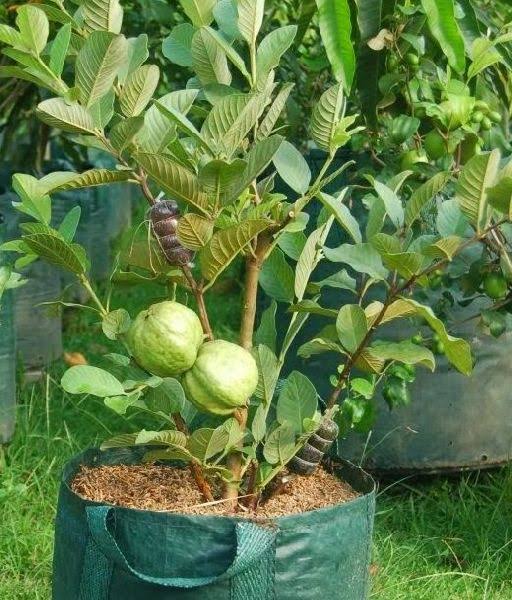
To ensure successful growth and development of guava trees, proper planting and transplanting techniques must be followed. When selecting a location, it is important to consider the tree’s preferences for full sun exposure and well-drained soil. Guava trees can tolerate a variety of soil types, but they thrive in fertile soil with a pH level between 5.5 and 7.0.
Before planting or transplanting, it is crucial to prepare the soil adequately. Start by removing any weeds, rocks, or debris from the planting area. Loosening the soil with a garden fork or tiller can improve drainage and help the roots establish more easily. Adding organic matter, such as compost or well-rotted manure, can provide the necessary nutrients for healthy tree growth.
When planting guava trees, dig a hole that is slightly larger and deeper than the tree’s root ball. Gently remove the tree from its container, being careful not to disturb the roots. Place the tree in the center of the hole, ensuring that the root collar is level with or slightly above the soil surface. Backfill the hole with soil, firming it gently to eliminate air pockets. Water the newly planted tree thoroughly, and apply a layer of mulch around the base to help retain moisture and suppress weed growth.
Transplanting guava trees follows a similar process, but extra care should be taken to minimize root disturbance. Dig a wide and deep hole around the tree, carefully lifting the root ball out of the ground. Immediately transfer it to its new location, ensuring that the hole has been prepared beforehand. Follow the same steps as mentioned earlier for planting, including watering and mulching.
By adhering to these best practices for planting and transplanting guava trees, you can provide the optimal conditions for their growth and ensure a successful start to their journey in your garden. Stay tuned for the next section on essential care and maintenance tips to help your guava trees thrive.
Essential Care and Maintenance Tips for Guava Trees
Proper care and maintenance are crucial for ensuring the healthy growth and productivity of your guava trees. By following these essential tips, you can create an optimal environment that promotes the well-being of your plants.
1. Pruning: Regular pruning is essential for maintaining the shape and size of your guava tree. Start by removing any dead or diseased branches, as well as those that are crossing or rubbing against each other. This not only improves airflow but also reduces the risk of pests and diseases. Additionally, thinning out the canopy allows sunlight to reach all parts of the tree, resulting in better fruit production.
2. Fertilization: Guava trees require regular fertilization to meet their nutritional needs. Use a balanced fertilizer, such as a 10-10-10, to provide essential nutrients such as nitrogen, phosphorus, and potassium. Apply the fertilizer evenly around the dripline of the tree, avoiding direct contact with the trunk. Aim to fertilize your guava tree every three months during the growing season, but be cautious not to over-fertilize as it can lead to excessive foliage growth and reduced fruit production.
Remember, these tips are just the beginning of ensuring the optimal care and maintenance of your guava trees. Stay tuned for more valuable insights on watering techniques, pest management, and harvesting practices for your beloved guava trees.
Watering Guava Trees: How to Properly Hydrate Them
Proper watering is crucial for the healthy growth and development of guava trees. These tropical plants require consistent moisture, but overwatering can lead to root rot and other problems. To ensure you are properly hydrating your guava trees, there are a few key considerations to keep in mind.
Firstly, it is important to understand the specific water requirements of your guava tree variety. Different guava tree varieties have varying needs, so it is essential to choose the right one for your climate and region. Typically, guava trees prefer well-draining soil that retains some moisture, but does not become waterlogged. This means that before watering your guava tree, it is important to check the soil moisture level. A simple way to do this is by sticking your finger about one inch into the soil. If it feels dry, it is time to water; if it feels moist, it is best to hold off for a little longer.
Fertilizing Guava Trees: Nourishing Your Plants for Optimal Growth
Fertilizing guava trees is an essential practice for ensuring their optimal growth and fruit production. Providing the right nutrients to your plants can greatly enhance their ability to thrive and bear healthy, flavorful fruits. While guava trees are generally tolerant of a variety of soil conditions, providing them with a balanced and appropriate fertilizer regimen is crucial for their overall health and productivity.
When selecting a fertilizer for guava trees, it is important to consider their specific nutrient requirements. Guava trees have a relatively high nitrogen (N) demand, especially during their active growing season. A fertilizer with a balanced N-P-K (nitrogen-phosphorus-potassium) ratio, such as a 16-16-16 or 20-20-20 formulation, can provide the necessary nutrients for healthy foliage and vigorous growth. Additionally, guava trees benefit from the presence of micronutrients, such as iron, manganese, and zinc, which can be supplied through a chelated micronutrient fertilizer. It is advisable to consult a local agricultural extension service or a garden center for specific fertilizer recommendations tailored to your geographic region and soil conditions.
To ensure the effectiveness of fertilization, it is recommended to apply the fertilizer evenly around the dripline of the tree, avoiding direct contact with the trunk. This allows the nutrients to be absorbed by the fine root hairs that are responsible for nutrient uptake. It is crucial to follow the manufacturer’s instructions for the appropriate application rates and frequency. Over-fertilization can lead to nutrient imbalances and potential damage to the tree, while under-fertilization can result in stunted growth and poor fruit production.
Regular monitoring of soil pH levels is also crucial when fertilizing guava trees. These trees thrive in slightly acidic to neutral soil conditions, with a pH range of 5.0 to 7.0. If your soil pH falls outside this range, amendments may be necessary to adjust the acidity or alkalinity. Lime can be added to raise pH, while sulfur or acidic fertilizers can be used to lower it. It is recommended to conduct a soil test to accurately determine the pH and nutrient levels of your soil.
In conclusion, fertilizing guava trees is a vital part of maintaining their health and maximizing their fruit production. By providing the necessary nutrients and maintaining the appropriate soil conditions, you can ensure that your guava trees thrive and reward you with bountiful and delicious fruits. Remember to consult with local experts and utilize soil tests to tailor your fertilizer regimen to the specific needs of your guava trees.
Pruning Guava Trees: Techniques for Enhancing Fruit Production
Pruning is an essential technique for enhancing fruit production in guava trees. It helps to maintain the tree’s shape, remove dead or diseased branches, and promote better airflow and sunlight penetration within the canopy. When done correctly, pruning can increase the overall health and productivity of guava trees, resulting in a bountiful harvest of delicious fruit.
One important aspect of pruning guava trees is timing. It is best to prune during the tree’s dormant season, which is typically in late winter or early spring. This allows for better healing of pruning wounds and minimizes stress on the tree. Additionally, pruning when the tree is dormant reduces the risk of spreading diseases through open wounds and decreases the likelihood of attracting pests.
When pruning guava trees, it is crucial to have the right tools and techniques. Start by removing any dead, damaged, or crossing branches. These can impede airflow and sunlight, leading to decreased fruit production. Use clean, sharp pruning shears to make clean cuts just beyond the branch collar, which is the swollen area where the branch attaches to the trunk. Avoid leaving stubs or cutting too close to the trunk, as this can hinder proper healing and increase the tree’s susceptibility to infections.
Regular pruning of guava trees not only improves fruit production but also enhances the tree’s overall shape and appearance. It is a valuable practice that gardeners and enthusiasts should learn and incorporate into their guava tree care routine. By following proper pruning techniques and timing, you can optimize the health and productivity of your guava trees, ensuring a plentiful yield of delectable fruits.
Protecting Guava Trees from Common Pests and Diseases
Guava trees, like any other plant, are susceptible to various pests and diseases that can hinder their growth and affect the quality of the fruit they produce. Protecting guava trees from these common threats is crucial for maintaining healthy and productive trees.
One common pest that affects guava trees is the guava fruit fly (Bactrocera correcta), which lays its eggs on the fruit. The hatched larvae feed on the fruit, causing it to rot and become inedible. To prevent infestation, it is important to monitor your trees regularly and remove any infected or damaged fruit. You can also use organic insecticides that are specifically designed to target fruit flies. Additionally, maintaining proper tree hygiene by removing fallen fruit and regularly cleaning the area around the tree can help discourage fruit fly populations.
Another common issue that guava trees face is fungal diseases, such as anthracnose (Colletotrichum gloeosporioides) and powdery mildew (Oidium psidii). These diseases can cause leaf spots, fruit rot, and overall decline in tree health. To protect your guava trees from fungal diseases, it is essential to provide good air circulation by pruning the branches and thinning the canopy. Proper spacing between trees can also help prevent the spread of fungal spores. Additionally, applying fungicides at the appropriate times, as recommended by agricultural experts, can help control the spread of these diseases.
By being proactive in identifying and addressing these common pests and diseases, you can ensure the health and longevity of your guava trees. Regular monitoring, proper sanitation practices, and the use of organic pest control methods will contribute to the success of your guava tree cultivation, allowing you to enjoy bountiful harvests of delicious and nutritious fruit.
Harvesting Guava Fruit: When and How to Pick Them
When it comes to harvesting guava fruit, timing is crucial to ensure optimal ripeness and flavor. Guava fruits are usually ready for harvest when they change color from green to yellow or light green, depending on the variety. However, color alone is not always the best indicator, as some guava varieties remain green when ripe. To accurately determine if a guava fruit is ready for picking, gently squeeze it. If it gives slightly under pressure and feels soft, it is likely ripe and ready to be harvested.
To pick guava fruit, hold the fruit gently in your hand and twist it until it separates from the tree. Alternatively, you can use a pair of pruning shears or scissors to cut the stem just above the fruit. Be cautious not to damage the fruit or the tree while harvesting. It is essential to handle guava fruit with care, as they can bruise easily. Place the harvested fruits in a basket or container lined with a soft material to prevent damage during transport.
By following these guidelines, you can ensure that you harvest guava fruit at its peak ripeness, guaranteeing a delightful and flavorful experience. However, our journey with guava doesn’t end at harvest. In the next section, we will explore the best practices for storing and preserving guava fruit to maximize their shelf life and retain their nutritional value.
Storing and Preserving Guava Fruit: Maximizing Their Shelf Life
Guava fruit is known for its rich flavor and numerous health benefits. However, to fully enjoy these qualities, it is essential to store and preserve guava fruit properly. Maximizing the shelf life of guava fruit ensures that you can savor its taste and nutritional value for an extended period.
When it comes to storing guava fruit, it is crucial to pick ripe, unblemished fruits for longer shelf life. Avoid choosing overripe or bruised fruit, as they are more prone to spoilage. Place the guava fruits in a cool, dry location with good air circulation to prevent moisture build-up, which can hasten ripening and mold formation. Additionally, storing guava fruit in a single layer rather than stacking them reduces the risk of bruising and enhances air circulation, further prolonging its freshness.
Preserving guava fruit can be achieved using various methods. Freezing guava is a popular option, as it allows you to enjoy the fruit’s goodness even when it’s out of season. Before freezing, wash and peel the fruit, removing any seeds or tough portions. Slice the guava into sections or cubes, then spread them in a single layer on a baking sheet lined with parchment paper. Place the sheet in the freezer until the guava pieces are frozen solid, and then transfer them to airtight containers or freezer bags. Frozen guava can be stored for up to six months, retaining its taste and nutritional content.
Creative and Delicious Recipes Using Guava Fruit
Guava fruit is not only nutritious, but it can also be used in a variety of creative and delicious recipes. Its unique flavor and tropical sweetness make it a versatile ingredient, adding a delightful twist to both sweet and savory dishes.
One popular way to enjoy guava fruit is by making a refreshing guava smoothie. Simply blend together fresh guava, a splash of lime juice, a handful of ice, and a touch of honey for sweetness. This vibrant and tropical drink is perfect for hot summer days or as a quick and healthy breakfast option.
Another tasty option is to incorporate guava into your salad. Slice ripe guava and toss it with a variety of fresh greens, such as spinach or arugula. Add some crumbled feta cheese, toasted almonds, and a drizzle of balsamic vinaigrette for a delightful combination of flavors and textures.
For a more indulgent treat, try making a guava tart. Prepare a buttery tart crust and fill it with a smooth guava custard made from simmering guava puree, sugar, and eggs. Bake until the custard is set and golden brown, then serve slices of this delectable dessert with a dollop of whipped cream or a sprinkle of powdered sugar.
These are just a few examples of the many creative and delicious recipes that can be made with guava fruit. So why not experiment with this tropical delight and let your culinary skills shine? Explore the possibilities and enjoy the incredible flavors of guava in your kitchen.
Exploring the Medicinal Properties of Guava Fruit
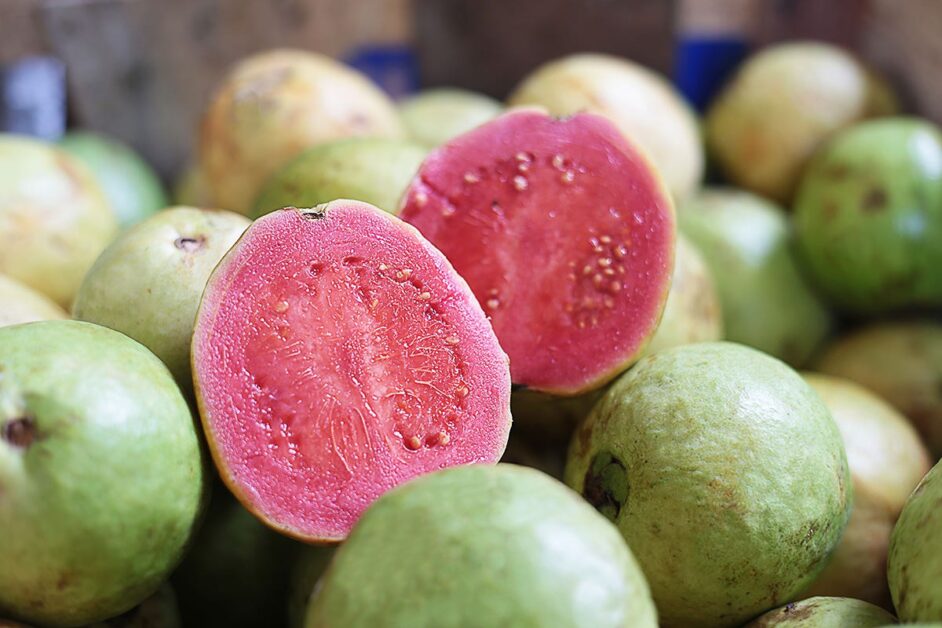
Guava fruit isn’t just a delicious tropical treat; it also boasts a range of potential medicinal properties that have piqued the interest of researchers and health enthusiasts alike. Rich in essential nutrients, antioxidants, and bioactive compounds, guava fruit has been used in traditional medicine for centuries to alleviate various ailments.
One of the standout qualities of guava is its high vitamin C content, which exceeds that of oranges. Vitamin C is a powerful antioxidant that helps boost the immune system and protects against oxidative stress. Additionally, guava fruit contains other important vitamins and minerals like vitamin A, potassium, and dietary fiber. These nutrients play a crucial role in supporting overall health and well-being.
Here’s a table outlining some key information about Guava trees, highlighting why they are considered one of the best-growing and most nutritious tropical fruits:
| Aspect | Description |
|---|---|
| Botanical Name | Psidium guajava |
| Common Name | Guava |
| Native to | Tropical regions of Central America, South America, and the Caribbean |
| Climate | Thrives in tropical and subtropical climates, but can tolerate some cold if protected |
| Soil Requirements | Well-draining soil, rich in organic matter; pH between 4.5 and 7.0 |
| Sunlight | Requires full sun exposure for optimal fruiting |
| Watering Needs | Regular watering, especially during dry periods; avoid waterlogged soil |
| Fertilization | Responds well to balanced fertilizers, especially those high in potassium and phosphorus |
| Pruning | Prune to shape the tree and promote airflow; remove dead or diseased branches |
| Pests and Diseases | Susceptible to pests like fruit flies, scale insects, and nematodes; fungal diseases like anthracnose and guava wilt can occur; proper sanitation and pest management are essential |
| Fruit Characteristics | Round or oval fruit with a green or yellow skin; flesh can be white, pink, or red, with numerous small seeds; high in Vitamin C, fiber, and antioxidants |
| Harvesting Time | Harvest when fruit is firm and fully mature; ripening continues off the tree |
| Uses | Consumed fresh, juiced, or used in jams, jellies, desserts, and savory dishes |
| Health Benefits | Rich source of Vitamin C, Vitamin A, dietary fiber, and various antioxidants; supports immune function, digestive health, and skin health |
| Cultural Significance | Guavas have cultural significance in many tropical regions, often used in traditional ceremonies and celebrations |
Guava trees are valued not only for their delicious and nutritious fruit but also for their ornamental value, making them a popular choice for home gardens and orchards in tropical and subtropical regions.
Guava Trees as Ornamental Plants: Enhancing Your Garden Aesthetics
Guava trees are not only known for their tasty and nutritious fruits, but they can also serve as beautiful ornamental plants, enhancing the aesthetics of your garden. With their evergreen foliage and lovely white flowers, guava trees add a touch of elegance to any landscape.
The compact size and attractive appearance of guava trees make them suitable for both small and large gardens. They can be grown as standalone specimens or used as hedging or screening plants to provide privacy and create an inviting atmosphere. Their dense foliage can also serve as a natural backdrop for other flowering plants, creating a visually appealing garden composition.
In addition to their visual appeal, guava trees also emit a pleasant fragrance when in bloom, making your garden a sensory delight. The fragrance attracts bees, butterflies, and other pollinators, promoting biodiversity and ensuring the health and abundance of your garden ecosystem. Furthermore, guava trees are relatively low-maintenance, requiring minimal pruning and care, making them a hassle-free addition to your garden.
Whether you have a small urban garden or a sprawling countryside landscape, guava trees can be a wonderful choice to enhance the aesthetics of your outdoor space. With their aesthetic appeal, captivating fragrance, and minimal maintenance requirements, guava trees are the perfect choice for gardening enthusiasts who want a visually pleasing and hassle-free garden.
Can guava trees survive in cold climates?
Guava trees are generally tropical or subtropical plants and may struggle to survive in cold climates. However, there are some cold-hardy varieties available that can tolerate lower temperatures.
How often should I water my guava tree?
Guava trees require regular watering, especially during the dry season. It is generally recommended to water them deeply once or twice a week, depending on the climate and soil conditions.
Are guava trees prone to any specific pests or diseases?
Guava trees can be susceptible to various pests and diseases, including fruit flies, aphids, and fungal infections like anthracnose. Regular monitoring and proper care can help prevent and manage these issues.
When is the best time to harvest guava fruits?
The exact timing for harvesting guava fruits depends on the variety and local climate. Generally, guava fruits are harvested when they are fully matured, have developed their characteristic aroma, and feel slightly soft when gently pressed.
How long can guava fruit be stored?
Guava fruit can be stored for a few days to a couple of weeks, depending on the variety and ripeness. For longer storage, it is recommended to refrigerate the fruits, which can extend their shelf life up to a month.
Can guava fruit be used in cooking or baking?
Absolutely! Guava fruit is versatile and can be used in a variety of culinary preparations. It can be eaten fresh, added to fruit salads, made into jams or jellies, used as a topping for desserts, or even incorporated into savory dishes.
Are there any medicinal properties associated with guava fruit?
Guava fruit is known for its rich nutritional content and potential health benefits. It is a good source of vitamin C, fiber, and antioxidants, which can boost the immune system, aid digestion, and promote overall well-being.
Can guava trees be grown in containers or pots?
Yes, guava trees can be grown in containers or pots, making them suitable for smaller gardens or urban spaces. However, proper care should be taken to provide adequate sunlight, water, and nutrients for the tree’s growth and productivity.
How often should guava trees be pruned?
Guava trees generally benefit from regular pruning to maintain their shape, control their size, and promote better fruit production. Pruning is usually done during the dormant season, and it is recommended to remove dead or diseased branches as needed.
Can guava trees be grown indoors?
While guava trees are typically grown outdoors, they can be grown indoors in containers with sufficient sunlight and proper care. However, indoor-grown guava trees may have reduced fruit production compared to those grown in their natural habitat.






